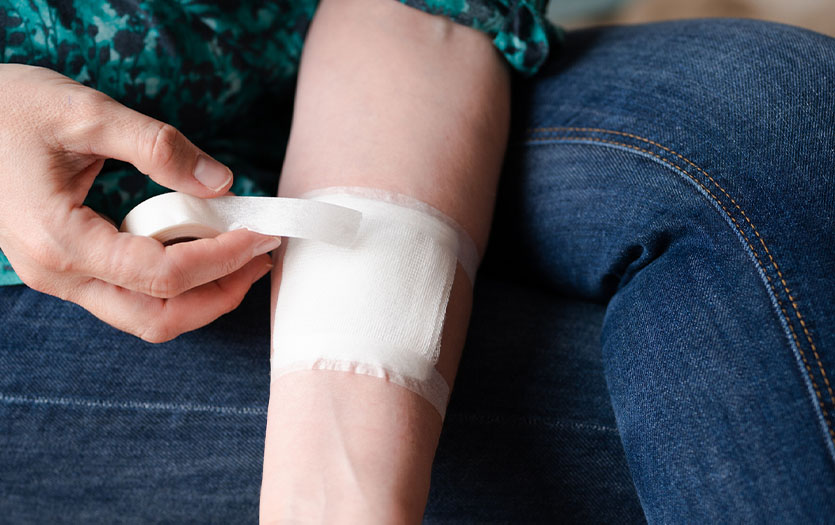
This post was written by Brooke Randol, MSN, RN, MSN, AGCNS-BC, CWS, CMSRN, clinical nurse specialist, Parkview Health Centers for Wound Healing.
If you have a deep wound, your provider will likely show and instruct you on how to pack the wound to promote healing. Packing the open space in a deep wound supports a moist wound-healing environment that allows your body to heal from the inside out. It can be hard to pack a wound on your own body, so you may need help from a family member or other caregiver for dressing changes. Whether you are caring for your own wound or a loved one’s, let’s learn more about how and why these types of wound dressings are used.
What does it mean to pack a wound?
Packing a wound refers to filling an open wound space with dressing material. This method is used for wounds that are deep, cratered or full thickness that also need to maintain a moist wound bed. Keeping the wound moist helps promote your body’s natural healing. Antimicrobial solutions or dressings are sometimes used to treat and prevent infection with these types of wounds.
Which types of wounds need packed?
Wound packing is used for surgical wounds that cannot be stitched or stapled closed, surgical wounds where the stiches or staples open after surgery, diabetic foot ulcers, stage 3 or 4 pressure injuries, abscesses, traumatic wounds or any other deep wound.
Watch How to pack a wound in 60 seconds.
Wound packing preparation
To prepare to pack a wound, first designate a clean area to prepare and lay out all of your supplies. The table surface should be cleansed before and after each dressing change. Dressings used for packing can include:
- Gauze
- Packing strip
- Specialty gelling fiber
- Wicking dressings
You will also need a pair of good scissors nearby that have been cleaned with rubbing alcohol before and after each dressing change.
How to pack a wound
After you’ve laid out all your supplies, wash your hands with an antimicrobial soap and put on a clean pair of gloves. Then remove the existing dressing, making sure to remove all the packing. Cleanse the wound as directed by your healthcare provider.
To repack the wound, start by moistening the dressing with the advised solution (such as normal saline), wringing out the excess liquid and gently insert the dressing with a Q-tip or a gloved finger to fill the space but not rising above the wound edges. Do not pack the space too tightly or allow the packing to touch or drag the skin surrounding the wound. Leave a tail one inch long to aid in removal and cover with a dry dressing.
Ideally, you’ll only use one piece of dressing packed inside the wound. If you do need to use multiple pieces of packing, note this on the dressing to ensure the next person who changes the dressing will know to remove multiple pieces of packing.
Dressing type, solution type and frequency of dressing changes will be directed by the health care provider managing the wound care treatments. If you have questions or concerns about the wound or dressing change, contact the healthcare provider directing wound care treatments.
When should you contact your healthcare provider?
Contact your healthcare provider for you experience any of the following:
- If you have difficulty inserting the dressing into the wound.
- If you suspect there is dressing material in the wound that you cannot remove.
- If there is a change in drainage color, consistency or odor of the wound.
- If there is bleeding that cannot be stopped by holding pressure to the area for several minutes.
- If the wound appears to be getting bigger or there are concerns for infection such as redness, pain or increased drainage.
If you need help scheduling an appointment or establishing care with a provider, our Access Center can help. Call any time, at 877-PPG-TODAY or 877-774-8632 for assistance. You can also explore our virtual care options here.



